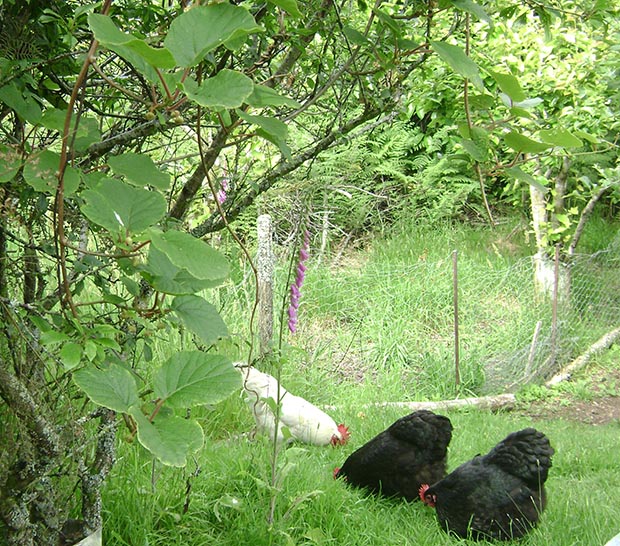Permaculture systems in the home orchard

Ben Gaia shares tips to get you growing more food using fewer chemicals.
Words: Ben Gaia
The word permaculture is taking over from organics. It’s a mix of the words ‘permanent’ and ‘agriculture’; in other words, a sustainable long-term means of producing all our food, materials, medicines, and other needs. It puts up a strong argument for growing perennial rather than annual crops, as once perennial tree crops are established, they continually produce.
The aim of permaculture is to end up with a system rather like an improved human-centred jungle of food, where a wide variety of plants grow in harmony with each other and with the land so people can benefit from them. For the serious permaculture enthusiast, those gardens will be in ever-increasing geometric circles around a mud-brick, turf-roofed yurt or redwood shingled pole house.
However, funky medieval housing isn’t compulsory. The main thing with permaculture is diversity, different species helping each other to grow and produce. Chickens, geese, and ducks are handy for mowing and manuring the orchard and cleaning up fallen fruit. They control the breeding cycles of pest insects, cut the grass for just a few dollars of feed a week, and deliver high nitrogen fertiliser to each fruit tree.
Vines grow up trees for support, trees shelter each other, greywater and rainwater are collected and channelled to fruit trees and gardens. Curves, hills, and bumps increase the ground area, creating microclimates, sunny and shady areas, and improving groundwater through-flows.
Slowing and directing groundwater flow is a newly rediscovered ancient science lately claimed to have been invented by everybody from the ancient Confucians to the Dragon Folk. Think of rice terraces, but less dramatic. And without the rice.
Perennials include trees. As you plant a food forest, you can collect info on food-bearing trees that grow well in your neck of the woods. Old varieties brought by early settlers are often the healthiest and most productive, but you will doubtless want to experiment with wild and wonderful new vitamin berries, South American jungle melons, and assorted Tibetan wonder foods.
Grazing animals aren’t generally successful when combined with food forests – other than as organic mulch – so fencing (with woven hazel hurdles of course!) will rapidly become part of your permaculture skill set. New amazing animal and plant combinations will emerge. What animals do go well with orchards? Bees, poultry and waterfowl, all small things with no teeth.
NZ native berries for food and even ersatz coffee (roasted coprosma seeds) will increase diversity and attract useful wild birds to your system/orchard. Tree fuchsia, mingimingi (Coprosma propinqua) and totara (Podocarpus totara) are all hardy native plants with delicious, tasty berries for birds or people. Poroporo (Solanum aviculare) isn’t frost hardy – and poisonous when green. However, when the large berries turn orange, you can cook them up like wild tomatoes, it attracts birds, and it’s a nice-looking subtropical plant.
There are native passionfruits and native spinach. Some farmers are debating whether to farm Chatham Island wekas. A warning though: too many wild birds can be a pest and eat all your harvests.
Herbs can be grown in one of the nearby circles for culinary use and home remedies for your family and animals. Garlic, wormwood, comfrey, echinacea and nettles, are all useful medicinal back-ups and can be made into foliar sprays for plants too.
In the home orchard, we can use multi-layered permaculture systems very easily. It’s just a fancy word for running your poultry flock, ducks and geese through the orchards. It means growing grapes, kiwifruit, and passionfruit vines up into the shelterbelts to the south to make use of a vertical, sun-facing space.
It’s catching the greywater from your washing machine in a series of gutters to lead it through stepped raised beds of tree seedlings, vegetable plants, or a cranberry patch. Permaculture is a fancy Australian name for all the things many of us are already doing in our orchards, with plenty of great ideas to get us growing more food using fewer chemicals, in the cycles of Mother Earth, our home planet.
Love this story? Subscribe now!
 This article first appeared in NZ Lifestyle Block Magazine.
This article first appeared in NZ Lifestyle Block Magazine.

